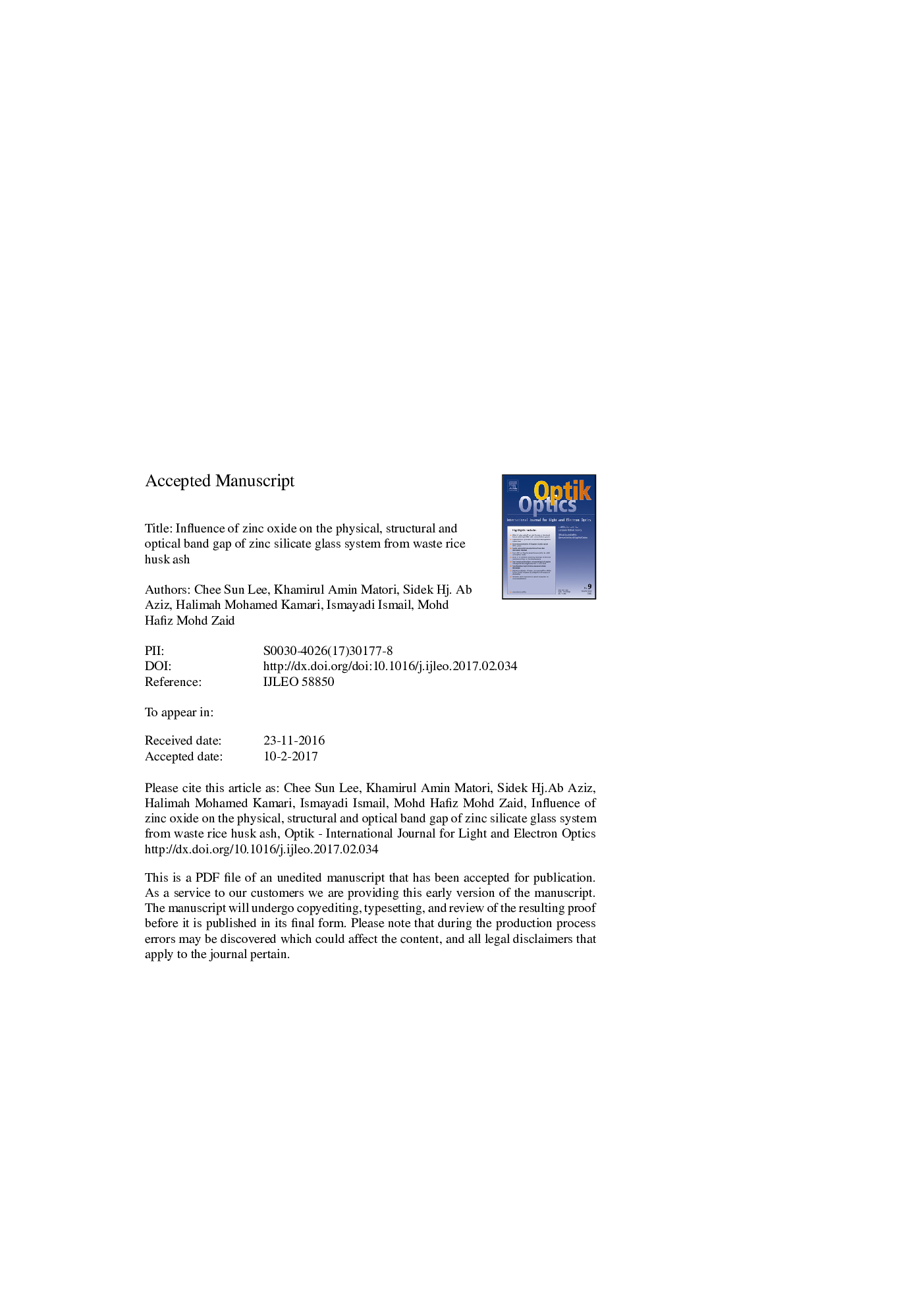| Article ID | Journal | Published Year | Pages | File Type |
|---|---|---|---|---|
| 5026063 | Optik - International Journal for Light and Electron Optics | 2017 | 22 Pages |
Abstract
Zinc silicate (ZnO-SiO2) glass was fabricated using melt-quench technique with compositions according to the empirical formula [(ZnO)x(WRHA)1-x] which x = 0.50, 0.55, 0.57 wt.%. These glass series acquire zinc oxide (ZnO) and white rice husk ash (WRHA) as silica source with two different melting temperatures of 1450 °C and 1500 °C. Temperature of 1450 °C and 1500 °C were chosen in this study because the lowest melting point of ZnO-SiO2 were at 1475 °C and by choosing a temperature within the range of 1475 °C a conclusive study on the best melting point using WRHA substituents can be done. Physical, structural and optical characteristics of fabricated glass samples were analyzed using Energy Dispersive X-ray Fluorescence (EDXRF), X-ray diffraction (XRD), Fourier Transform Infrared Spectroscopy (FTIR) and UV-vis (UV-vis). Optical band gap of the system was obtained by approaching the optical absorption techniques from the Mott-Davis methods. Results indicate that ZnO-SiO2 glass samples emerge in favors of direct and indirect forbidden transition and increase in ZnO causes a higher absorption thus resulting in lower band gap. Last but not least, in this study based on the increase of ZnO content, the glass samples which contains a higher amount of ZnO has a higher band gap as Zn2+ ions reacts as good network modifier in the glass structure and formed a better arrangement and structure compared to system which has less network modifier.
Related Topics
Physical Sciences and Engineering
Engineering
Engineering (General)
Authors
Chee Sun Lee, Khamirul Amin Matori, Sidek Hj. Ab Aziz, Halimah Mohamed Kamari, Ismayadi Ismail, Mohd Hafiz Mohd Zaid,
